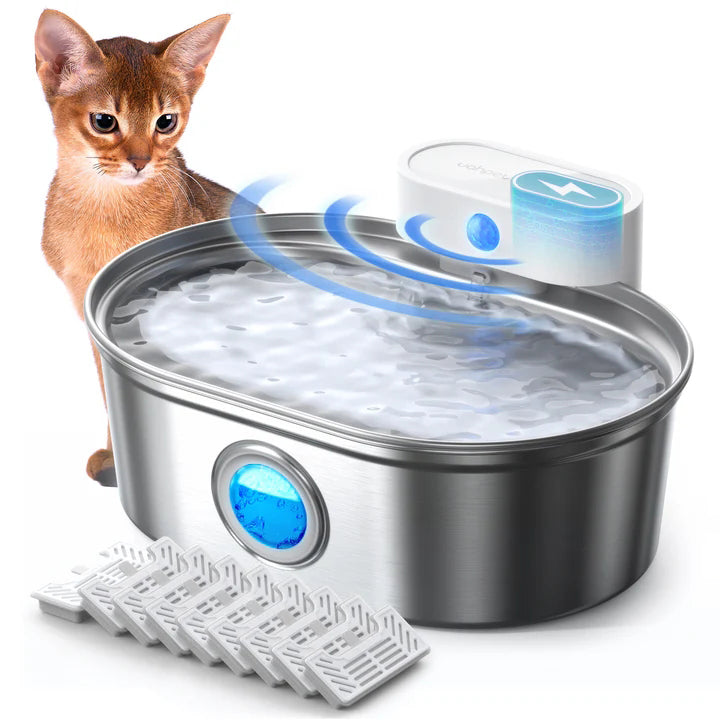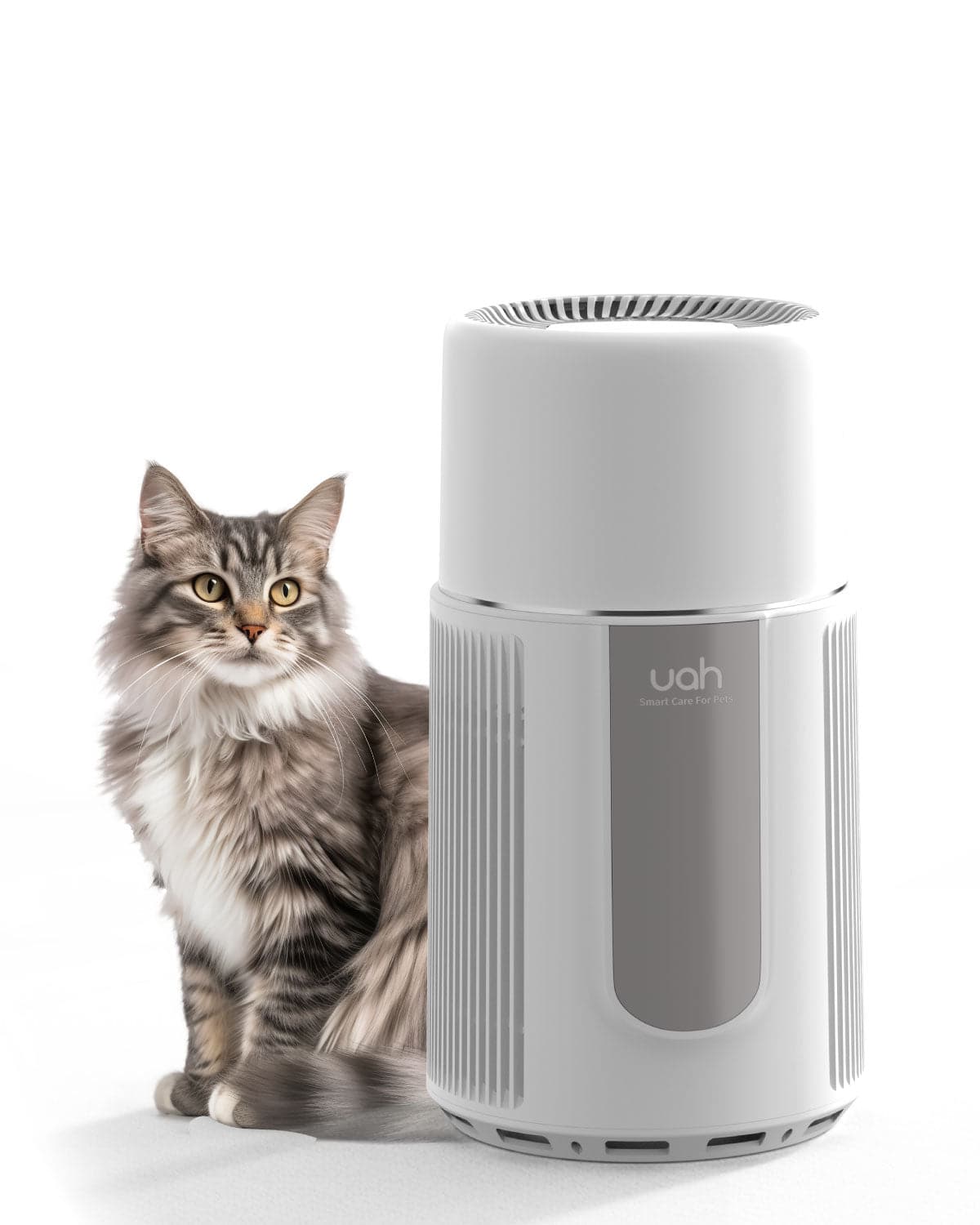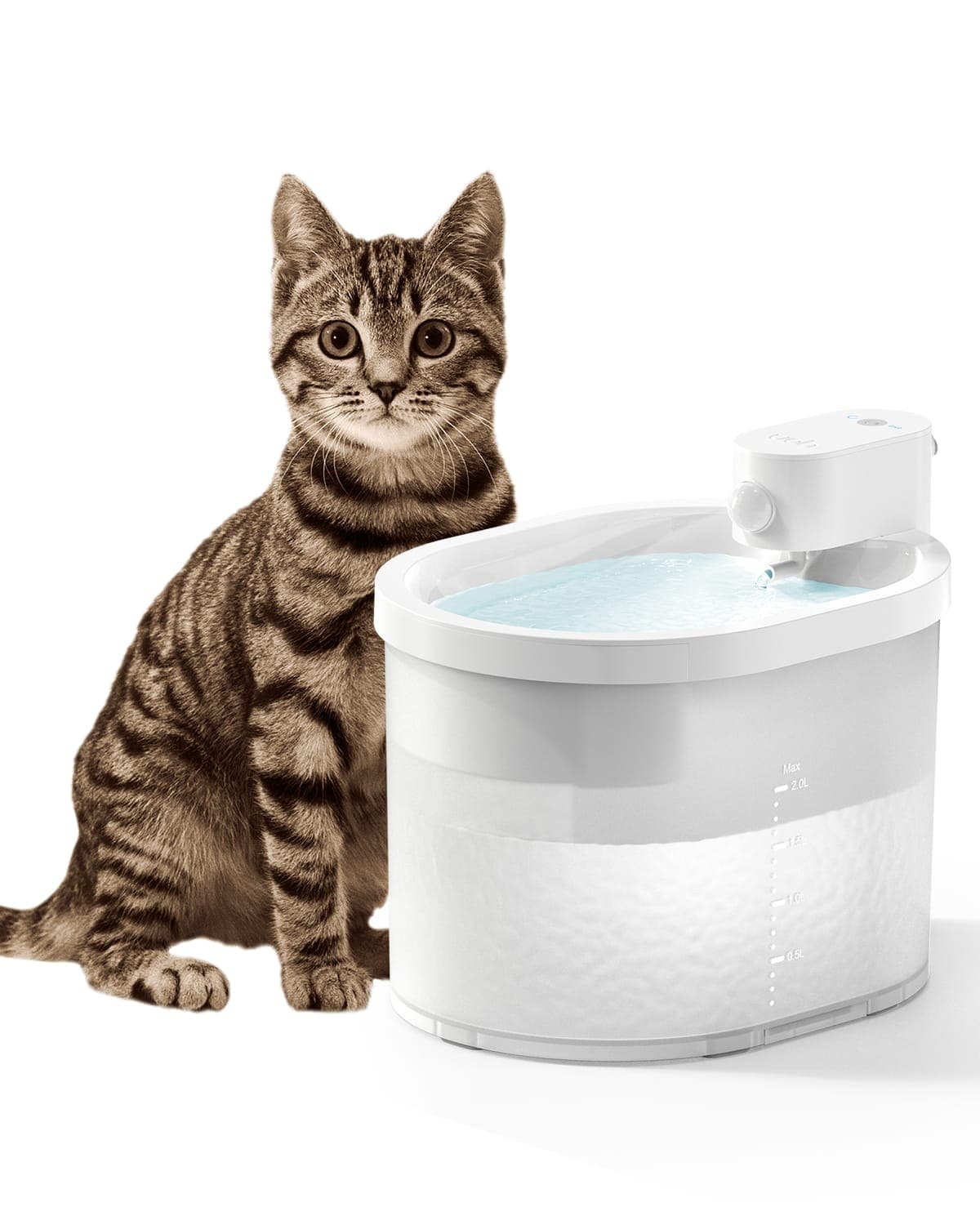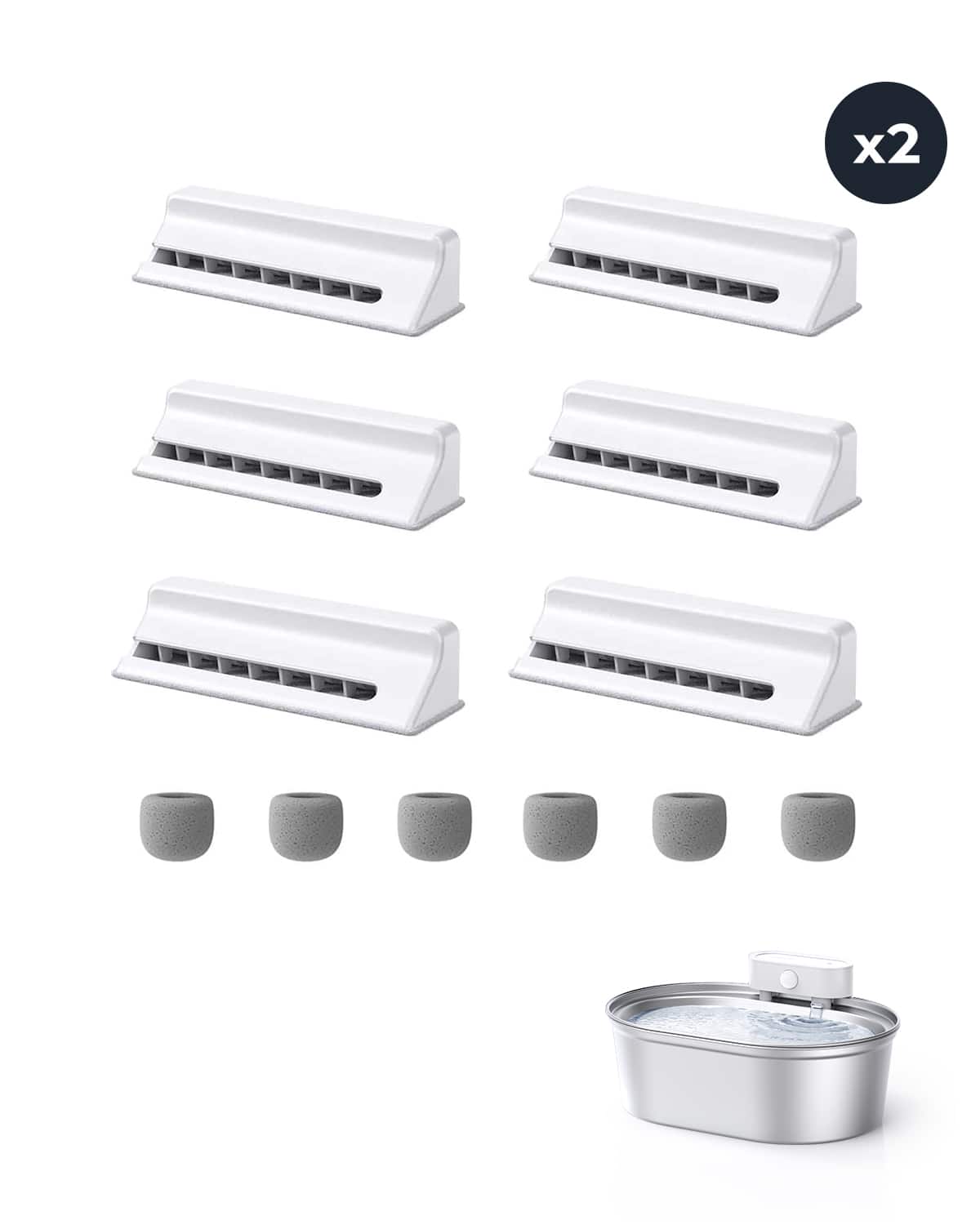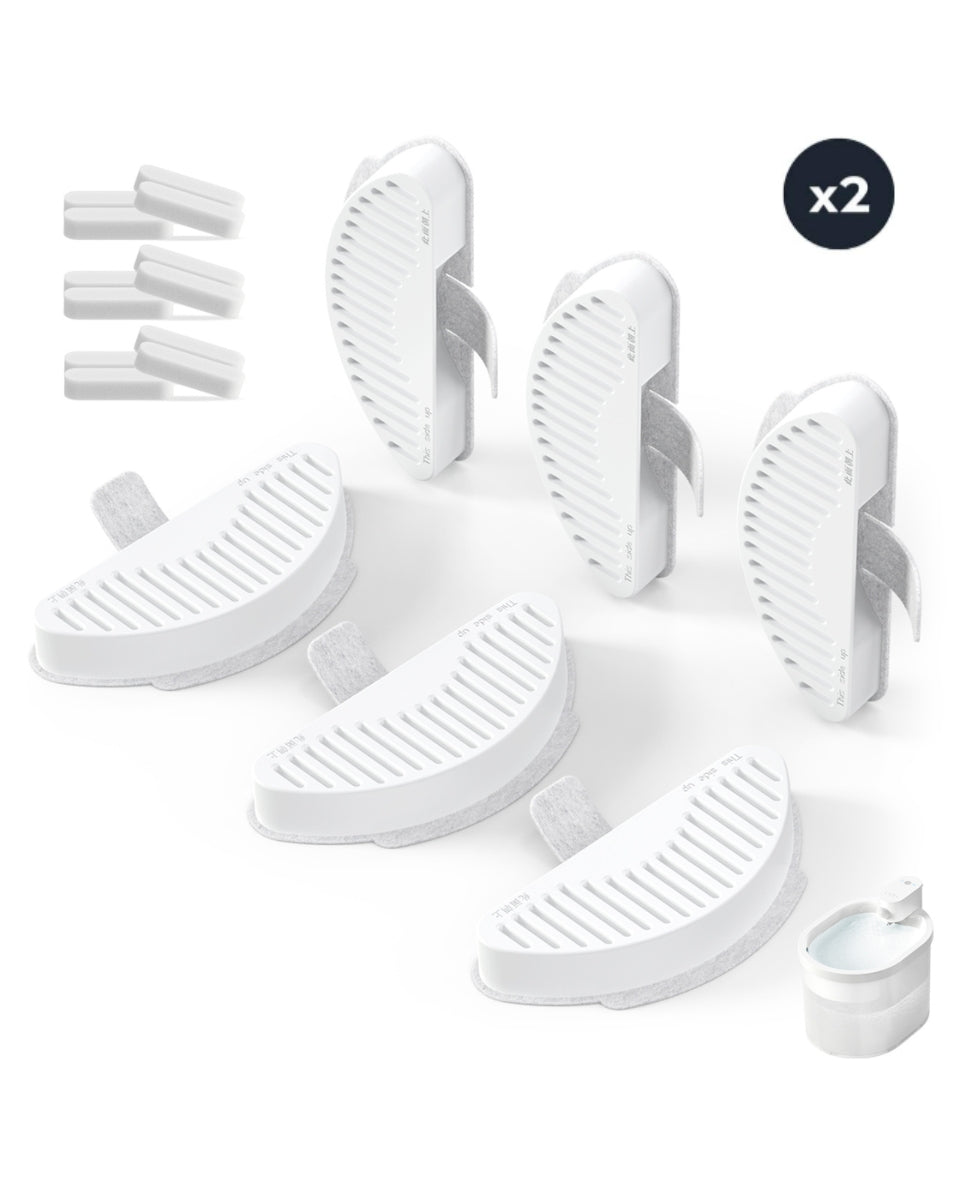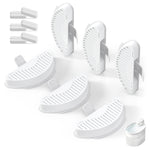Keeping your cat hydrated is essential for their health and well-being, and a cat water fountain can be a great way to encourage them to drink more water. However, to ensure the fountain remains a safe and clean water source, it's crucial to understand how often to change the cat water fountain filter. Neglecting this simple maintenance task can lead to a buildup of bacteria, debris, and other contaminants, which can harm your pet. In this article, we'll explore the factors that influence filter replacement frequency, the signs that indicate it's time for a change, and tips for maintaining your cat's water fountain.
Why Changing the Filter is Important
The filter in a cat water fountain plays a vital role in keeping the water clean and free from impurities. It traps dirt, hair, food particles, and other debris that can accumulate over time. Additionally, many filters are designed to remove odors and improve the taste of the water, making it more appealing to your cat. Without regular filter changes, these contaminants can build up, leading to clogged filters, reduced water flow, and potentially harmful bacteria growth. Ensuring the filter is changed on time not only keeps the water fresh but also extends the life of the fountain itself.
Factors That Influence Filter Replacement Frequency
Several factors can determine how often you need to change the cat water fountain filter. These include the number of cats using the fountain, the type of filter, the quality of your water, and how frequently the fountain is cleaned. For example, households with multiple cats may need to replace the filter more often due to increased usage. Similarly, if your water source contains high levels of minerals or impurities, the filter may become clogged more quickly. Always refer to the manufacturer's guidelines for specific recommendations, but as a general rule, most filters should be replaced every 2 to 4 weeks.
Signs It's Time to Change the Filter
Even if you follow a regular replacement schedule, there are certain signs that indicate it's time to change the filter sooner. These include a noticeable decrease in water flow, an unpleasant odor coming from the fountain, or visible dirt and debris in the water. If your cat seems less interested in drinking from the fountain, it could also be a sign that the water no longer tastes fresh. Paying attention to these cues can help you stay on top of filter maintenance and ensure your cat always has access to clean water.
Tips for Maintaining Your Cat Water Fountain
In addition to changing the filter regularly, there are other steps you can take to keep your cat water fountain in top condition. Clean the fountain thoroughly at least once a week, using mild soap and warm water. Disassemble the fountain to clean all parts, including the pump, which can accumulate debris over time. Rinse everything thoroughly to remove any soap residue before reassembling. It's also a good idea to inspect the filter during each cleaning to ensure it's functioning properly. By following these maintenance tips, you can keep your cat's water fountain running smoothly and provide them with a reliable source of fresh water.
Choosing the Right Filter for Your Fountain
Not all filters are created equal, and choosing the right one for your cat water fountain is essential. Look for filters that are compatible with your specific fountain model and designed to address the unique needs of your household. For example, if you have hard water, consider a filter that targets mineral buildup. Some filters also include activated carbon to remove odors and improve water taste. Investing in high-quality filters can make a significant difference in the performance and longevity of your fountain, as well as the health of your cat.
Common Mistakes to Avoid
When it comes to maintaining a cat water fountain, there are a few common mistakes that pet owners should avoid. One of the most frequent errors is neglecting to clean the fountain regularly, even if the filter is changed on time. Another mistake is using harsh chemicals or abrasive materials to clean the fountain, which can damage its components. Additionally, some pet owners forget to check the pump for debris, which can lead to reduced water flow or even pump failure. By being mindful of these potential pitfalls, you can ensure your cat's water fountain remains a safe and reliable hydration source.
The Benefits of a Well-Maintained Water Fountain
A well-maintained cat water fountain offers numerous benefits for both you and your pet. For your cat, it provides a continuous supply of fresh, clean water, which can encourage them to drink more and stay hydrated. This is especially important for cats prone to urinary tract issues or kidney problems. For you, a properly maintained fountain means less frequent cleaning and fewer worries about water quality. By staying on top of filter changes and regular maintenance, you can enjoy peace of mind knowing your cat has access to the best possible water source.
Understanding how often to change the cat water fountain filter is key to keeping your pet healthy and happy. By following the guidelines outlined in this article, you can ensure your cat always has access to clean, fresh water. Regular filter changes, combined with proper cleaning and maintenance, will not only extend the life of your fountain but also provide your feline friend with a reliable hydration source. Don't wait for signs of trouble—make filter replacement a regular part of your pet care routine and give your cat the gift of clean water every day.


